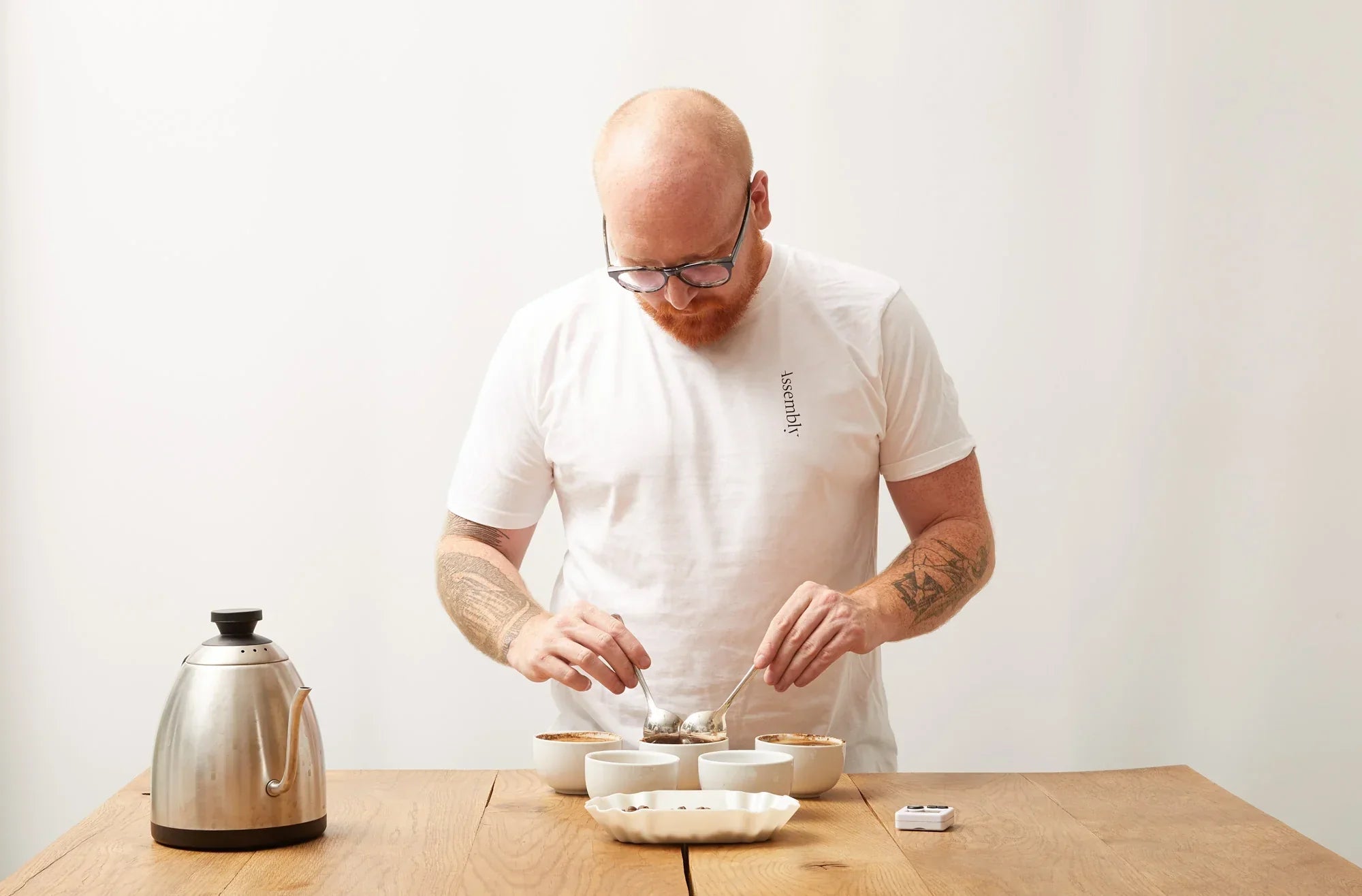Illustrations explained

Assembly’s interpretation of coffee flavour descriptions
The objective of flavour descriptions in the specialty coffee industry is to highlight the unique flavour characteristics of coffees based on their provenance, variety and how they were processed after harvest.
But describing flavour using only words posed some limitations for us.
We observed that:
- Flavour descriptions that listed specific taste notes related more to the sensory references of the author than the drinker
- If the drinking experience didn’t match the flavour descriptions, it could be alienating and demotivating for the drinker
- Language could be interpreted differently drinker-to-drinker.
Therefore, we hypothesised that alternative mediums - most likely visual - could facilitate more efficient communication of flavour description.
To direct our research into this area, we considered the fundamental difference between the two key variables that impact communication of flavour:
1 – Taste is subjective and therefore cannot be defined. As a result, specific flavour notes can only ever be used to guide the drinker. And, identical aroma compounds are found in both synthetic and natural flavours. This means neither are definitive and so more general flavour themes were preferable in communicating to a wide range of drinkers.
2 – Texture is objective and therefore can be defined. How the beverage feels on the tongue, the balance of its acidity and its body are easier to quantify, experienced more regularly in daily life, and therefore suited to more prescriptive communication.
Where we started

Kochere
‘Ethiopia’ — Natural

Oporapa
‘Colombia’ — Washed

Espresso
‘Kenya, Colombia, Brazil’
Where we finished

Monteverde Geisha
‘Colombia’ — Yellow Natural

Bumbogo
‘Rwanda’ — Natural

Assembly House Espresso
‘El Salvador’ — Honey
Sample brushstrokes



We use:
- Colours - to represent flavour categories, not specific notes
- Hue - to express flavour intensity
- Space and shape - to communicate body and mouthfeel
- Composition - to reflect acidity, sweetness and finish
Today we collaborate with our wholesale partners and wider community to create each flavour illustration. We challenge ourselves to explore how flavour notes can be captured visually, and to understand the full potential of illustration as a technique to capture as much of the sensory experience of coffee as possible.



